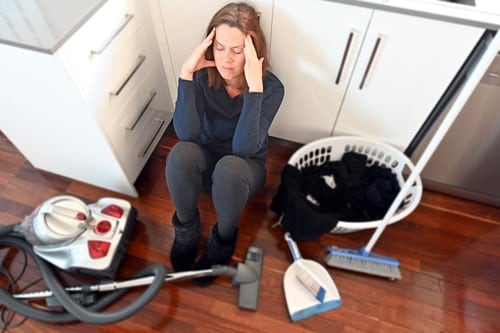by Amanda Wilson – Chemical Dependency Counselor Assistant
In today’s fast-paced world, many women are juggling multiple roles at once—professional careers, familial duties, social obligations, and personal well-being.
This expectation to “do it all” is not a new phenomenon, but its weight and visibility have grown in recent decades.
The Do It All expectation that women should excel in both the public and private spheres often leaves them feeling overwhelmed and undervalued.
In this post, we’ll explore how this Do It All Expectation has evolved, its impact on women’s lives and health, and why it’s time for a cultural shift toward more balanced roles for all genders.
The Origin of The Do It All Expectation
Historically, women’s roles were often confined to the home, taking care of children, cooking, and maintaining the household.
However, as the feminist movement progressed, particularly in the 20th century, women began entering the workforce in larger numbers.
While this was a significant victory for gender equality, it also created a double burden.
Suddenly, women were expected to perform the same tasks as their male counterparts in the workplace while also managing the responsibilities traditionally associated with the home.
This phenomenon is often referred to as the “second shift,” a term coined by sociologist Arlie Hochschild in her 1989 book The Second Shift: Working Families and the Revolution at Home.
Hochschild’s research revealed that while women were increasingly employed outside the home, they still performed most of the domestic work. This imbalance persists today, with women still shouldering more household chores, even if they work full-time.
The Modern Do It All Expectation Dilemma
In contemporary society, the pressure on women to balance career and family has intensified.
Social media, in particular, exacerbates the issue.
Platforms like Instagram and Pinterest often showcase seemingly perfect images of women balancing work, home, fitness, and social lives with ease.
These portrayals create an unrealistic standard and contribute to feelings of inadequacy among women who struggle to meet these expectations.
The pressure to excel in every area of life can lead to burnout.
According to a study by the American Psychological Association, women report higher levels of stress than men, largely due to the “work-life conflict” that arises when they are expected to meet the demands of both family and work life simultaneously.
The constant pressure to perform can result in mental health struggles, including anxiety, depression, and feelings of exhaustion.
The Impact on Family Roles

In families, the Do It All expectation often leads to a disproportionate share of responsibility falling on women, even in dual-income households.
A 2020 report from the Pew Research Center found that despite greater gender equality in the workplace, women still perform more housework and child-rearing tasks than men.
This is especially true for mothers, who experience the added pressure of being seen as the “primary caregiver,” regardless of their employment status.
This imbalance doesn’t just affect women—it has consequences for children and relationships as well.
When mothers are overburdened with responsibilities, their ability to connect with their children and partners can suffer. This can impact family dynamics, causing strain in relationships and contributing to stress in the home.
Societal Expectations and Cultural Pressures
Beyond family and work, societal pressures to “do it all” also manifest in women’s social roles.
Women are often expected to look a certain way, be emotionally available to everyone, and maintain relationships with friends and extended family.
In many cultures, a woman’s worth is still measured by her ability to fulfill these diverse and demanding roles.
These pressures can often lead to unhealthy coping mechanisms like drinking or other forms of substance use disorder.
Women are more likely than men to internalize stress, and without proper outlets or support systems, they may turn to substances to temporarily numb or escape their feelings (Grant et al., 2015).
Over time, this pattern can lead to dependency.
The rise in alcohol consumption and SUD among women highlights the importance of addressing these societal pressures and fostering environments that support women’s mental and emotional well-being.
While men are not immune to social pressures, women are more frequently subjected to a higher standard of multi-tasking and emotional labor.
A study published in Gender & Society found that women, especially mothers, are often expected to be “always available” and “always giving.”
This expectation, combined by the other roles they play, can lead to a sense of inadequacy when women inevitably fail to meet the unrealistic standards imposed upon them.
The Need for Change
So, what can be done to alleviate the overwhelming “do it all” pressure on women?
Acknowledge The Problem
The first step is acknowledging the problem.
We need to challenge the cultural assumption that women are naturally suited to juggle multiple roles and excel in all of them.
These unrealistic expectations can contribute to mental health struggles and unhealthy coping mechanisms, such as alcohol or substance use.
Women who feel pressured to meet these demands may turn to substances to numb the stress or escape feelings of inadequacy, which can lead to the development of substance use disorder (SUD).
This shift in thinking starts with promoting gender equality, not just in the workplace, but in the home as well.
Encourage Shared Family Role Responsibilities
A keyway to support women is by encouraging shared responsibility in family roles.
Research shows that when men actively engage in parenting and household chores, both partners experience less stress, which can reduce the likelihood of turning to substances as a coping mechanism.
Moreover, both partners report greater relationship satisfaction and a healthier dynamic overall.
Employers also play a critical role in supporting women’s well-being.
By offering flexible work arrangements, such as remote work options or paid family leave, women can better balance their personal and professional lives, reducing the strain that often leads to unhealthy behaviors like drinking or using substances.
Dismantle Outdated Stereotypes
At a broader societal level, we must dismantle the stereotypes that limit both men and women.
The belief that women must be everything to everyone; perfectly balancing career, family, and personal life, sets them up for failure, increasing vulnerability to stress, anxiety, and substance misuse.
By challenging this outdated narrative, we can create an environment where both men and women are free to pursue their personal, professional, and familial aspirations without the weight of unrealistic expectations.
Conclusion
The Do It All expectation placed on women is not just an outdated gender role, it’s a contributing factor to the rise in substance use disorders.
From managing careers and households to maintaining social lives, women are often expected to excel in every area, leaving little room for self-care.
As many women turn to substances to cope with these pressures, it becomes clear that systemic change is needed to reduce the burden.
While strides have been made toward gender equality, much work remains to be done to alleviate the pressure on women.
Supporting women in recovery means not only helping them overcome addiction but also addressing the underlying societal pressures that contributed to their substance use.
It’s time to shift the Do It All Expectation narrative—not just for the benefit of women, but for society as a whole.
True equality means shared responsibility and a recognition that no one, regardless of gender, should have to shoulder the weight of everything alone.
Sources:
- Hochschild, Arlie Russell. The Second Shift: Working Families and the Revolution at Home. Penguin Books, 1989.
- “The Gender Gap in Housework.” Pew Research Center, 2020.
- American Psychological Association. “Stress in America 2020: A National Mental Health Crisis.”
- Grant, B. F., Goldstein, R. B., Saha, T. D., Chou, S. P., Jung, J., Zhang, H., & Hasin, D. S. (2015). Epidemiology of DSM-5 alcohol use disorder: Results from the National Epidemiologic Survey on Alcohol and Related Conditions III. JAMA Psychiatry, 72(8), 757–765. https://doi.org/10.1001/jamapsychiatry.2015.0584
- “Gender, Work, and Family: The Impact of Workplace Practices on Family Life.” Gender & Society Journal, 2019.

